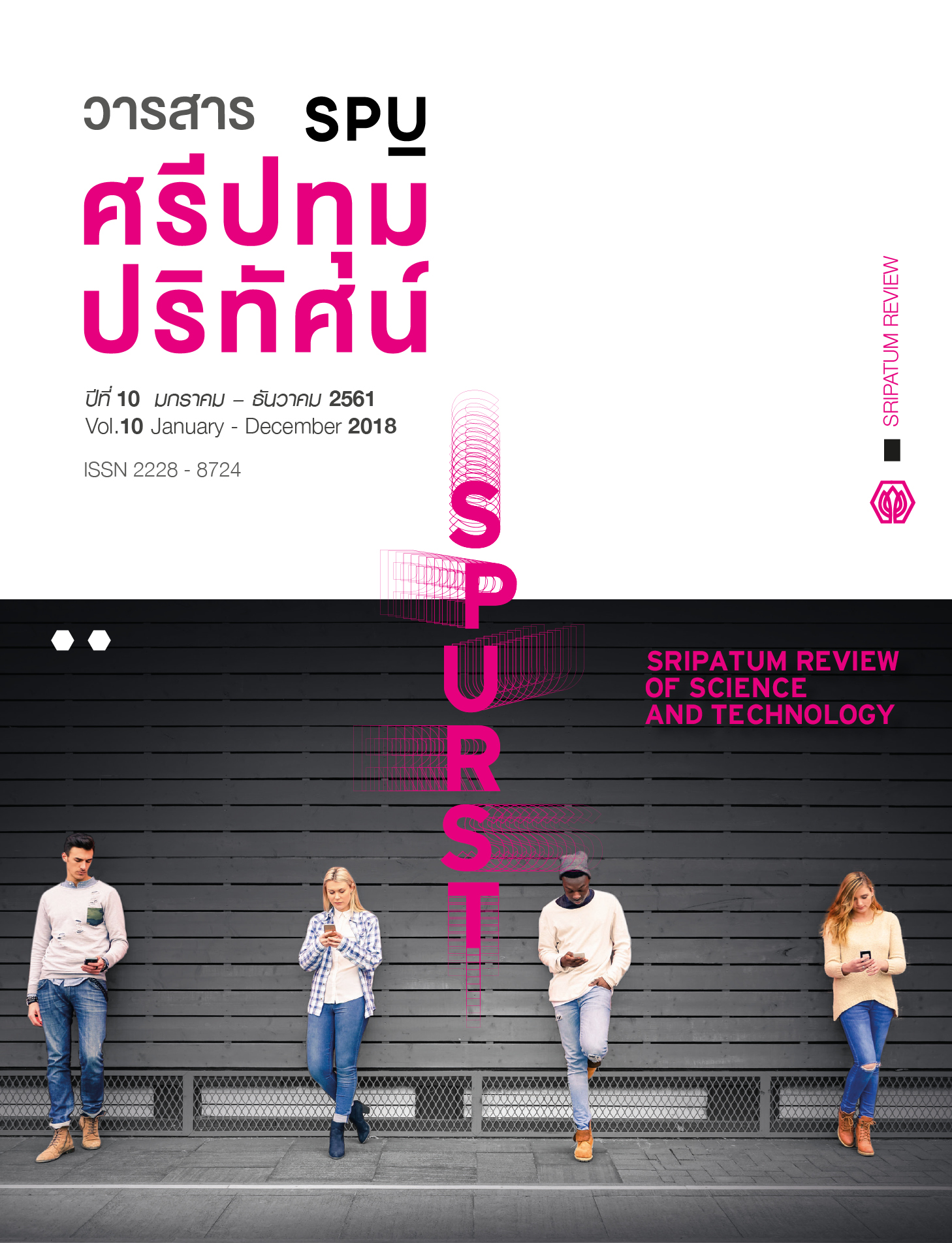Thermal Behavior of Lightweight Metal-Sheet Building-Envelope Incorporated with Phase Change Material (PCM)
Main Article Content
Abstract
Heat Transfer behaviour through light building envelope wall can be managed using Phase Change Material (PCM) to enhance latent thermal mass with minimal burden on wall structure. By absorbing heat during the day and releasing it at night, PCM incorporated wall can reduce diurnal maximum inner wall surface temperature and decrease cooling load for air conditioning system. The research numerically investigated thermal behaviour daily cycle of a lightweight metal-sheet building envelope with fiberglass insulator incorporated with varied amount of PCM layer under Bangkok weather condition. Implicit Finite Difference Method using Crank-Nicolson scheme was applied for numerical calculation. The result indicates that the amount of PCM used influents the effectiveness of wall temperature reduction and how latent heat storage is activated per weight of implemented PCM
Article Details
References
Biswas K., et.al. 2014. Combined Experimental and Numerical Evaluation of a Prototype Nano-PCM Enhanced Wallboard. Applied Energy (Vol. 131), 15 October 2014, 517-529.
Eiamworawutthikul, C. and Yongchareon, W. (2007). The Influence of Phase Change Material in Heat Transfer Behavior of Building Envelope Structure. The Proceeding of The 21st Conference of Mechanical Engineering Network of Thailand (ME-Nett2007), 17-19 October 2007 at Cholburi (in Thai)
Eiamworawutthikul, C. (2008). Utilization of Phase Change Materials in Building Envelope Structure for Thermal Energy Management. The Proceedings of the 12th National and International Sripatum University Conference (SPUCON2008), 31 August 2008 at Sripatum University (Bangkhen Campus), 10-17. (in Thai)
Eiamworawutthikul, C. (2010). Thermal Mass Enhancement of Wall Structure Using Phase Change Material. The Proceedings of the 6th Conference on Energy Network of Thailand, 5-7 May 2010 at Srinakharinwirot University, ENETT6-1006. (in Thai)
Gracia, D.A. and Cabeza, L.F. 2015. Phase Change Material and Thermal Energy Storage for Building. Energy and Buildings (Vol. 103), 15 September 2015, 414-419
Jin, X., Medina, M.A., and Zhang, X. 2014. On the Placement of a Phase Change Material Thermal Shield within the Cavity of Buildings Walls for Heat Transfer Rate Reduction, Energy (Vol.73), 14 August 2014, 780-786
Hawes, D.W., et al. 1993. Latent Heat Storage in Building Materials. Energy and Building (Vol. 20), 77-86.
Incropera, F.P., and DeWitt, D.P. 2002. Fundamental of Heat and Mass Transfer (5th Edition). John Wiley & Sons, Inc. , USA.
Lai, C.-M. and Hokoi, S. 2014. Thermal Performance of an Aluminum Honeycomb Wallboard Incorporating Microencapsulated PCM, Energy and Building (Vol. 73), April 2014, 37-47
Rudd, A. 1993. Phase-Change Material Wallboard for Distributed Thermal Storage in Buildings. ASHRAE Transactions: Research, 99(2), paper # 3724.
Silva, T., et.al. 2012. Experimental Testing and Numerical Modelling of Masonry Wall Solution with PCM Incorporation: Passive Construction Solution, Energy and Buildings (Vol. 49), June 2012, 235-245
Thai Meteorological Department. (2004). Bangkok Weather Statistical Data 2001-2003. (in Thai)
Wattanavichien, P. and Sudprasert, S. (2016). The Experimental Study of Thermal Behavior with the Placement of Phase Change Material (PCM) Thermal Sheild inside Lightweight Wall in Air-Conditioned Building. The Proceedings of the 12th Conference on Energy Network of Thailand, 8-10 June 2016 at Pitsanulok, ENETT12-EB-83 (in Thai)


